AI image generators have surged in popularity, transforming the way we create and interact with visuals online. If you’re anything like me, you’ve probably stumbled across their mesmerizing results — all over social media, articles, or even advertisements. I’ve spent experimenting with these AI image generators, from creating surreal art to more practical uses, like finding that perfect image for a blog post. It’s incredible how advanced and accessible they’ve become in such a short time.
I’ve tested various tools, and after using them for everything from design projects to personal exploration, I’ve come to appreciate their strengths and quirks. Some are better suited for realistic images, while others excel at abstract art. Here are my top picks.
- DALL·E 3: High-quality image generation with deep ChatGPT integration..
- Midjourney: Best for artistic, stylized, and cinematic-quality visuals.
- Adobe Firefly: AI-powered design within Adobe’s ecosystem, ideal for creatives.
- Stable Diffusion: Open-source, customizable, and privacy-friendly AI generator.
- Ideogram: Specializes in AI-generated images with accurate text rendering.
- Leonardo AI: Focuses on detailed fantasy and sci-fi artwork for game design.
- Meta AI: Real-time AI image generation, optimized for social media use.
In this article, I’m not going to dive into the ethical debates or the philosophical questions about AI and art (though those are important conversations). I wrote about the AI art controversy in a separate article two years ago. Instead, I want to focus on what these tools can do — how they can help you create, inspire, and simplify your workflow. Whether you’re looking to generate a logo, create a stunning piece of digital art, or just have some fun, I’ve tested and compared the best AI image generators to help you find the one that fits your needs.
Best AI image generators comparison
I compared the best AI image generators across several key parameters to help you determine the best option for you. The table below summarizes what I discussed extensively in this guide.
Featured Partners
| Best for | Developer/ parent company | Starting price | Free plan | Accessibility | Ease of use | |
|---|---|---|---|---|---|---|
| DALL-E 3 | Integrating AI Images into Your Workflow and Simplicity | OpenAI | $20 per month | Yes, via Microsoft Bing Image Creator | ChatGPT Plus or Enterprise, Microsoft Copilot, API | Very easy |
| Midjourney | Artistic, High-Quality AI-Generated Images | Midjourney | $10 per month | No | Discord or Midjourney web app | Moderate |
| Adobe Firefly | Seamless Integration with Adobe Ecosystem | Adobe | $10.74 per month | Yes | firefly.adobe.com, Photoshop, Express, and other Adobe tools | Easy |
| Stable Diffusion | Customization and Control | Stability AI | Free | Yes | Downloadable, Stable Assistant, Civitai, NightCafe, Tensor.Art | Complex when using locally, easy on third-party platforms |
| Ideogram | Accurate Text on Images | Ideogram AI | $8 per month | Yes | Web app | Easy |
| Leonardo AI | Creators | Canva | $12 per month | Yes | Leonardo.ai web app, Android and iOS mobile apps | Moderate |
| Meta AI | Social Media Enthusiasts and Casual Creators | Meta | Free | Yes | Meta.ai, WhatsAp, Instagram, Facebook | Easy |
My approach for testing and comparing AI image generators is to throw a complex, detailed prompt their way and see how they handle it. For this comparison, I used the following prompt: “Generate a realistic scene of a young woman in a vibrant market at sunset, wearing casual clothing and smiling as she shops. The setting is in the 1920s, with soft golden hour lighting casting warm tones on her skin, and a sign reading ‘Fresh Produce’ visible in the background. The scene should also include diverse people with varying skin tones and textures, and natural expressions of joy and interaction.”
DALL-E 3

Best for integrating AI images into your workflow
DALL·E 3 is OpenAI’s latest text-to-image model, integrated into ChatGPT for Plus and Enterprise users. Unlike its predecessors, DALL·E 3 is far better at understanding detailed prompts and generating high-quality images with impressive coherence. It excels at photorealism but can also produce artistic and illustrative styles with a level of prompt adherence that was previously hit-or-miss.
One of its biggest advantages is the ability to edit generated images directly within ChatGPT. You can tweak parts of an image by simply describing the changes you want, and it will regenerate the selected portion accordingly.
I used Microsoft’s Bing Image Creator, which is free to generate the image below.
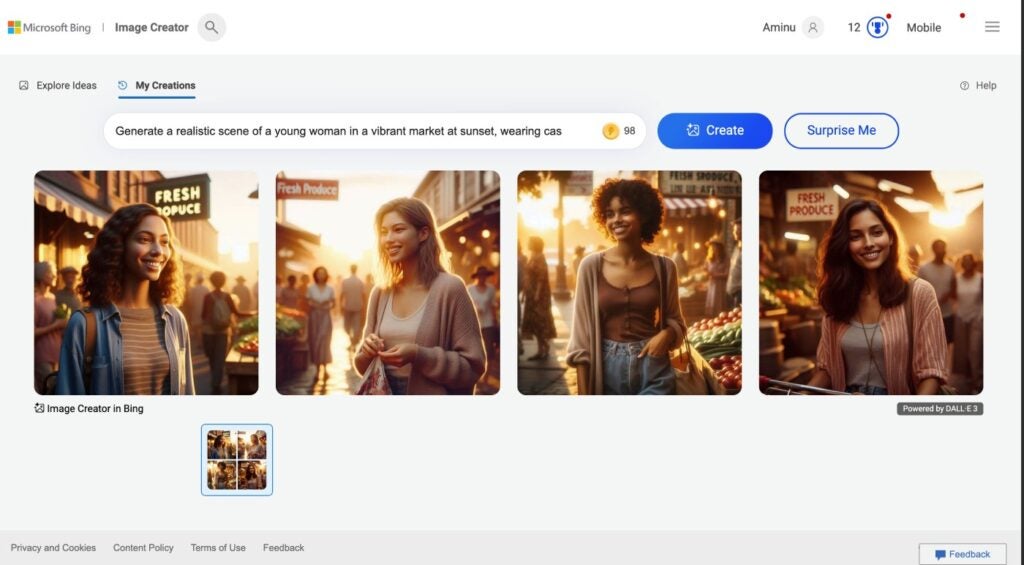
Why I chose DALL-E 3
I chose DALL-E 3 because of its conversational approach to image generation. It’s perfect for anyone who wants to brainstorm ideas or tweak images on the fly. Plus, its integration with ChatGPT means you get a lot of value if you’re already using OpenAI’s ecosystem.
Pricing
- DALL-E 3 is included in ChatGPT Plus, which costs $20/month. Though there’s no free plan, you can access it for free through Microsoft Copilot, with limitations on image quality and usage.
Features
- Text editing within images
- Strong prompt adherence
- Seamless ChatGPT integration
- Photorealistic image generation
Pros and cons
| Pros | Cons |
|---|---|
| Allows conversational editing and refinement | No free plan OpenAI platform; requires ChatGPT Plus subscription |
| Easy to use | Sometimes struggles with strict prompt adherence |
Midjourney

Best for artistic, high-quality AI-generated images
Midjourney is widely regarded as one of the most artistic AI image generators and for good reason — the platform excels at producing images that feel more like works of art. The quality of textures, colors, and compositions is impressive.
Users can interact with Midjourney either through Discord or the web app. I found that Midjourney gives you extensive control over the creative process; for example, when you input a prompt, it generates four images, allowing you to choose your favorite and refine it further. Features like remixing and upscaling let you experiment with different variations or make an image sharper and more detailed.
However, images you create are public by default. While this can be great for getting inspiration from the Midjourney community, it also means that your work can be seen by others unless you opt for a paid plan to keep it private. Additionally, the free trials for Midjourney have been suspended periodically due to overwhelming demand, but the paid plans offer access to generous image creation time.
Why I chose Midjourney
Midjourney consistently produces some of the most visually striking and innovative results. If you’re someone who values artistic flair and likes experimenting with different styles, Midjourney is hard to beat. I also love that Midjourney encourages experimentation with its community aspect. The public sharing of images helps you see what others are creating and inspires new ideas and concepts you might not have considered.
For more information, read our comparison review of DALL-E 3 vs Midjourney.
Pricing
- Basic: $8 per month when billed annually or $10 per month for month-to-month billing.
- Standard: $ 24 per month when billed annually or $30 per month for month-to-month billing.
- Pro: $48 per month when billed annually or $60 per month for month-to-month billing.
Features
- Web app and Discord access
- Aspect ratio and customization
- Variation and upscaling capabilities
Pros and cons
| Pros | Cons |
|---|---|
| Great community support | There’s no free trial, so you need to pay to access it. |
| Advanced controls: aspect ratio, upscaling, blending, and panning | Images are public by default. |
For more information, read our comprehensive Midjourney review.
Adobe Firefly
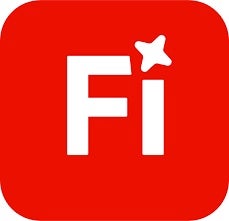
Best for seamless integration with Adobe ecosystem
Adobe Firefly blends AI image generation with Adobe’s extensive creative suite, making it a highly adaptable tool. Firefly is baked into products like Photoshop and Adobe Express, making it especially attractive to anyone working within the Adobe ecosystem. I was impressed by the quality of the images and the customization options available right out of the gate.
The real standout feature is its integration with other Adobe tools. I could easily take an AI-generated image and adjust it further in Photoshop or add it to an Adobe Express project. Firefly’s AI is trained on a large library of publicly licensed images, which ensures that images are safe for commercial use.
For standalone AI image generation, Firefly is not as strong as Midjourney or DALL·E 3. The results can sometimes look flat or generic, especially for complex scenes. But for graphic designers and content creators who already use Adobe tools, it’s a clear and convenient choice.
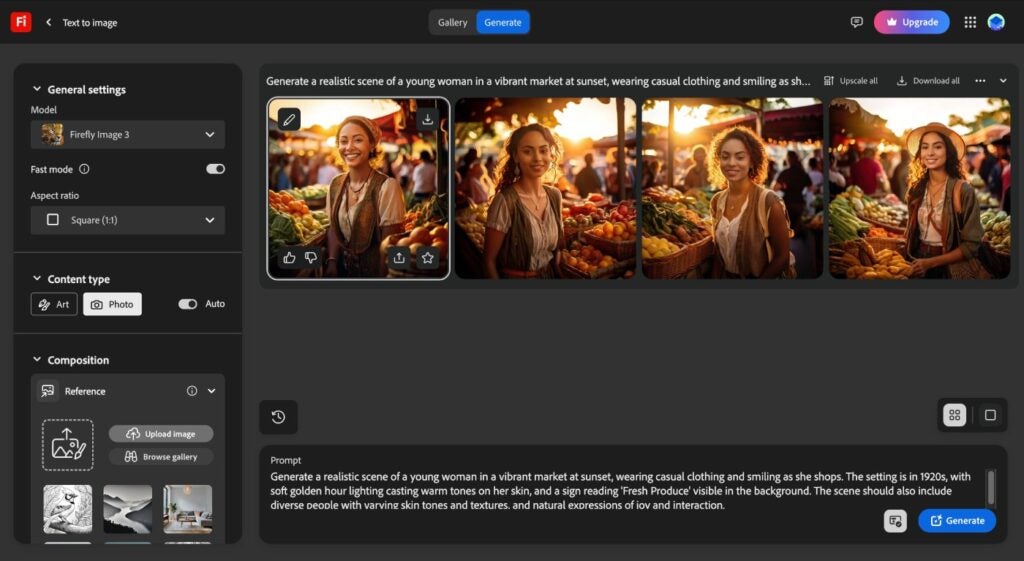
Why I chose Adobe Firefly
Adobe Firefly combines the power of AI with the reliability and functionality of Adobe’s tools. Those who frequently use Photoshop and other Adobe products will find the integration a huge selling point.
Pricing
- Free: 25 generative credits/month (watermarked images).
- Adobe Firefly Standard: $10.74/month or 107.49/year.
- Adobe Firefly Pro: $32.24/month or 322.49/year.
Features
- 3D scene generation
- Content-aware editing
- Supports a variety of file formats, including JPEG, PNG, and SVG
- Generative fill and generative expand capabilities
Pros and cons
| Pros | Cons |
|---|---|
| Integrated into Adobe Creative Cloud — perfect for Photoshop and Illustrator users | Can struggle with abstract or highly imaginative prompts (it didn’t add the “fresh produce” sign I asked for in the prompt to the output) |
| Commercially safe — no copyright risks from AI training data | Limited creativity as a standalone text-to-image tool |
| Powerful Generative Fill — best for editing existing images |
Stable Diffusion
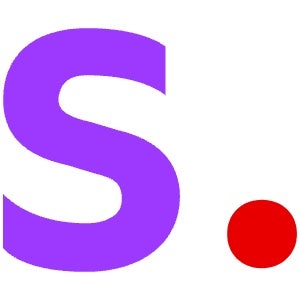
Best for customization and control
Stable Diffusion is the maverick of the AI image generation world — open-source, highly customizable, and perfect for tinkerers. Created by Stability AI, it’s one of the most widely adopted models in the AI art generation space. There are several ways to access it, from web-based platforms to running it locally on your computer. The most popular interface for accessing it is DreamStudio — Stability AI’s platform — or third-party tools like NightCafe, Civitai, and Tensor.Art.
I tested Stable Diffusion through the Stable Assistant platform, which provides a straightforward interface for generating images based on prompts. The process is simple: log in, input a prompt, choose an aspect ratio, and submit. Within seconds, the AI generates an image for you based on your prompt. I found the tool’s prompt adherence to be solid.
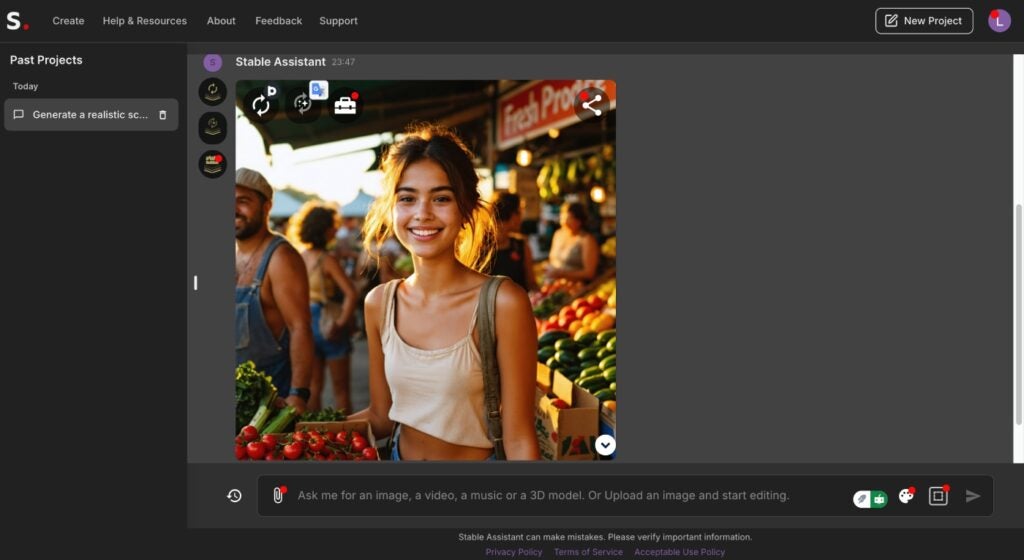
Why I chose Stable Diffusion
Stable Diffusion’s flexibility and open-source nature make it perfect for advanced users who want to experiment with different models, fine-tune outputs or integrate AI into their workflows.
Pricing
- Free: Open-source and locally runnable.
- Should you decide to use the tool on a third-party platform, pricing will depend on the platform, but many offer free credits so you can try them out.
Features
- Local deployment
- Third-party platforms — Available on numerous online platforms like NightCafe
- Inpainting and editing
- Customizable settings
- Pre-trained models — Access specialized models for specific styles or use cases
Pros and cons
| Pros | Cons |
|---|---|
| Great for anime, photorealism, and illustrations | Requires some technical knowledge if you want to use it locally |
| Highly customizable | Some NSFW content; because of its open-source nature, some platforms may have less content moderation |
| Generates high-quality art |
For more information, read our comparison review of Stable Diffusion vs Midjourney.
Ideogram
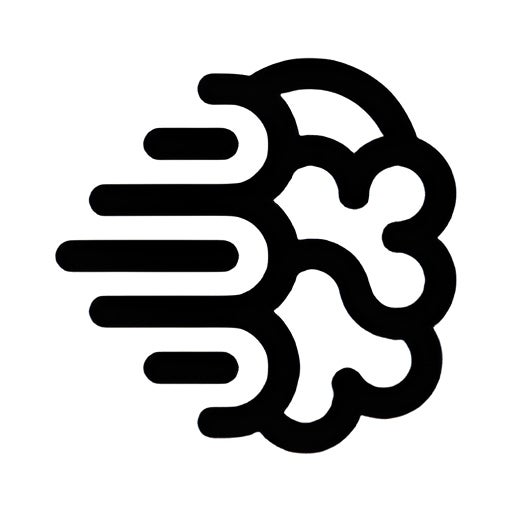
Best for accurate text on images
Ideogram is my go-to tool for generating images that require precise text renderings. While many AI image generators struggle with rendering text accurately — often resulting in garbled or nonsensical words — Ideogram shines in this area. The AI’s latest 2.0 algorithm excels at delivering both high-quality visuals and text that make sense.
Another feature I like is the Magic Prompt tool, which automatically refines my input, making it more detailed and descriptive. This often resulted in images that were much closer to what I had in mind.
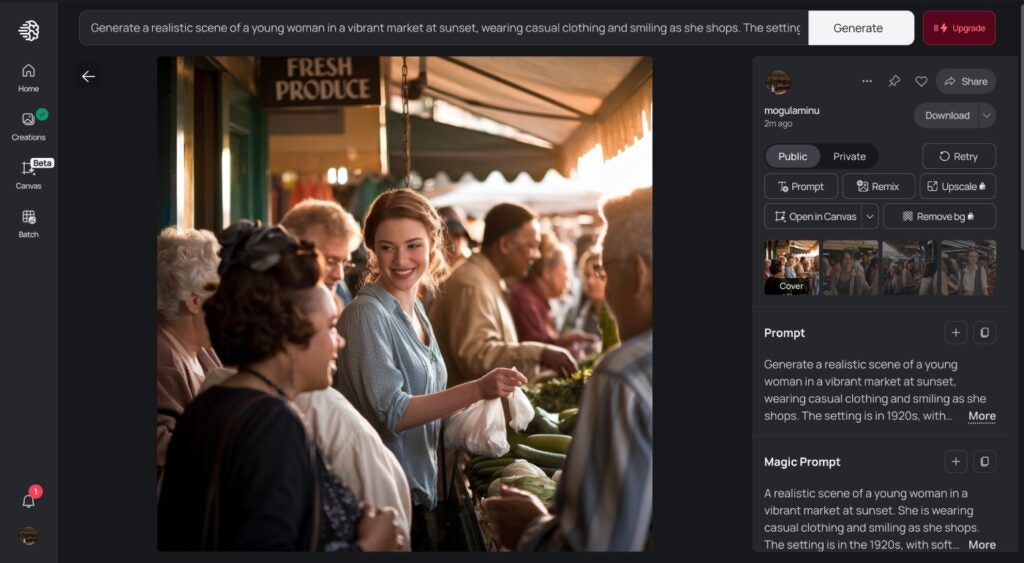
Why I chose Ideogram
When it comes to getting the perfect balance of visual appeal and readable text, Ideogram offers a combination that is tough to beat. The updates and new features, such as the ability to refine images and prompts through its Magic Prompt and Canvas tools, cement Ideogram as my go-to for text-centric image generation.
Pricing
- Ideogram offers a free tier with limited credits.
- Basic: $7 per month, billed annually or $8 billed month-to-month
- Plus: $16 per month, billed annually or $20 billed month-to-month
- Pro: $48 per month, billed annually or $60 billed month-to-month
- Team: $25 per user per month, billed annually or $30 per user billed month-to-month –2 users minimum
Features
- Accurate text generation
- Canvas feature
- Magic Prompt
- Generate multiple variations of your design in seconds
Pros and cons
| Pros | Cons |
|---|---|
| Batch generation helps streamline workflows for creators with repetitive tasks | Free tier has restricted credits |
| Great for logos, posters, and social media graphics | Generated images are public by default unless you’re using a paid plan |
Leonardo AI

Best for creators
The Leonardo AI photo generator platform has become a favorite for artists, designers, and creators looking for high-quality image generation with a good level of control. Originally designed as a well-executed wrapper around Stable Diffusion models, Leonardo AI has evolved significantly in its own right. As of mid-2024, Leonardo was acquired by Canva, bolstering its capabilities, particularly with features like Dream Lab, which leverages the Phoenix model to create custom images based on prompts.
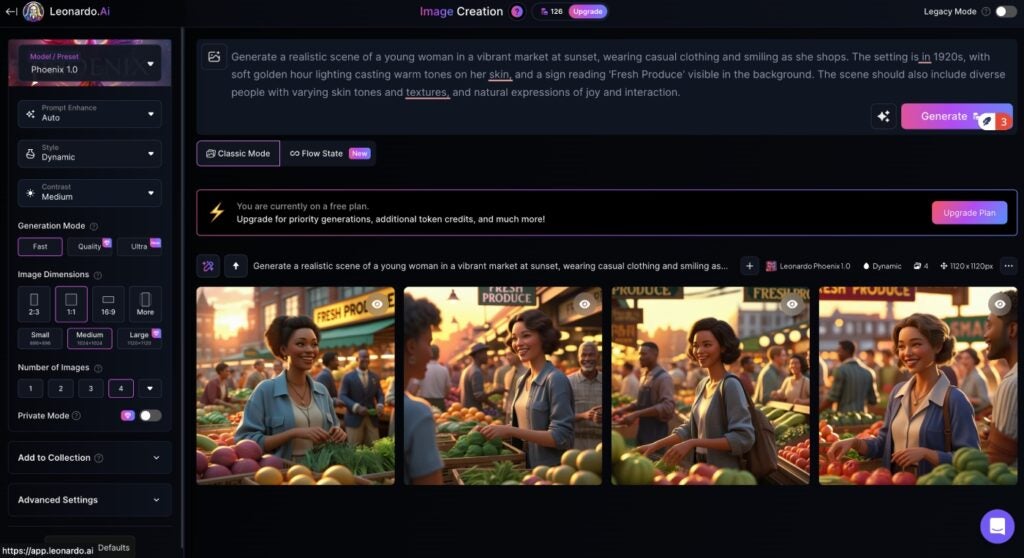
Why I chose Leonardo AI
Leonardo AI strikes a balance between affordability and functionality. The free plan offers 150 daily tokens for image creation, which should be enough for casual users or those just starting with AI art. The ability to generate images with transparent backgrounds and control layout makes it adaptable for various projects.
Pricing
- Free: 150 fast tokens daily
- Apprentice: $10 per month, billed annually or $12 billed month-to-month
- Artisan Unlimited: $24 per month, billed annually or $30 billed month-to-month
- Maestro Unlimited: $48 per month, billed annually or $60 billed month-to-month
- Leonardo for Teams: Starts at $24 per seat
Features
- Realtime generation actions
- Realtime Canvas actions
- Create motion video
- Image upscaling
- Offers 13 models and presets including Phoenix 1.0, Phoenix 0.9, Flux Dev, Anime and more
Pros and cons
| Pros | Cons |
|---|---|
| Excellent control over image generation | UI can be overwhelming for beginners. |
| Offers a prompt improvement tool | Free plan doesn’t support private image generation |
Meta AI
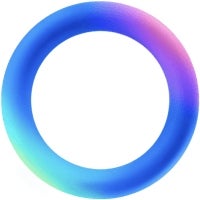
Best for social media enthusiasts and casual creators
Meta AI, developed by the company behind Instagram, Facebook, and WhatsApp, is an AI chatbot that doubles as an image generator. Launched in April 2024, Meta AI is powered by Meta’s Llama 3 LLM model and serves as a direct competitor to ChatGPT. Seamlessly integrated into Meta’s platforms, it offers the added convenience of being accessible directly within your social media apps. The AI image generator is free, making it an attractive option for casual creators and social media enthusiasts. All generated images come with a watermark, which may limit its appeal for professional or commercial use.
Meta AI’s image generator is straightforward to use. You can access it via Facebook, Instagram, WhatsApp, or directly through Meta.ai. Typing a prompt into the search bar yields one image in-app or four on the website. From there, you can edit, animate, or download your creation. While the tool is user-friendly, it has limitations in terms of customization and control.
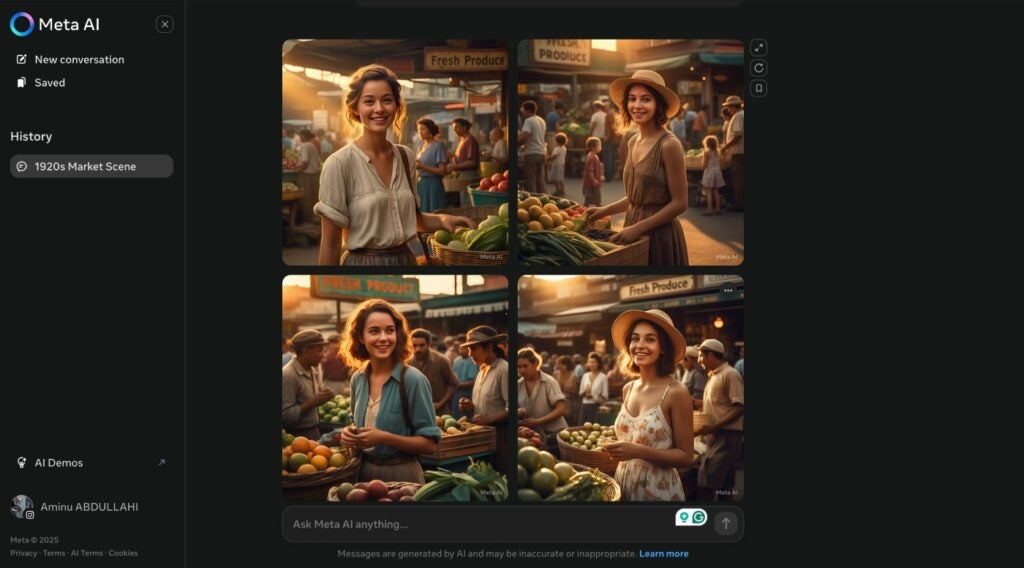
Why I chose Meta AI
Meta AI’s seamless integration with social media platforms and its accessibility earned it a spot on this list of best AI image generators. Having an AI photo generator in the app is convenient for those who spend a lot of time on Instagram or Facebook. It’s ideal for quick, casual creations, like generating visuals for a social media post or experimenting with AI art without switching between apps or tools.
Pricing
Meta AI’s image generator is free to use; however, the watermark on generated images may limit its utility for commercial purposes.
Features
- Accessible directly within Facebook, Instagram, and WhatsApp
- Generates one image in-app or four on meta.ai
- Allows for text-based edits, animations, and downloads
- Adjusts images as you refine your prompt
Pros and cons
| Pros | Cons |
|---|---|
| Free to use | Watermarked images may not be suitable for professional use |
| Integrated with popular social media platforms | Limited customization |
| User-friendly and accessible | Some prompts may yield inconsistent or unrealistic results |
Pictory.AI
How do AI image generators work?
AI image generators rely on advanced machine learning models, such as Generative Adversarial Networks (GANs) or Diffusion Models, to create images. These models are trained on large datasets containing millions of images and their corresponding text descriptions.
During the training phase, the AI learns to understand the connection between words and visual elements. When you submit a text prompt, the AI interprets it and generates an image that reflects the description. More advanced models, such as DALL·E 3, MidJourney, and Stable Diffusion, utilize iterative processes to refine the image, ensuring it aligns closely with the prompt and achieves a high degree of realism or artistic quality.
What makes the best AI image generator?
The best AI image generators stand out based on numerous key factors:
- Adherence to prompts: How well the generator understands and executes complex or detailed prompts.
- Ease of use: User-friendly interfaces and intuitive controls.
- Accessibility: Availability across platforms (web, mobile, desktop) and pricing tiers.
- Image quality: Resolution, realism, and artistic style.
- Customization: Options to tweak results (e.g., aspect ratio, style, lighting).
- Speed: How quickly it generates images.
- Pricing: Affordability and value for money.
- Ethical considerations: Transparency in data usage and copyright policies.
What is the best AI image generator overall?
DALL·E 3 takes the crown as the best AI image generator overall; it excels in understanding complex prompts, generating highly detailed and creative images. Plus, its ability to produce realistic and imaginative visuals makes it a top choice for both professionals and hobbyists.
Methodology
To identify the best AI image generators, I tested more than 20 tools using the same complex prompt across all platforms. This prompt was designed to challenge the generators’ ability to handle details, lighting, skin tones, and text inclusion. I evaluated each tool based on several factors, including adherence to prompts, ease of use, accessibility, image quality, customization options, speed, pricing, and ethical considerations.
After thorough testing, I selected the top seven tools that delivered the best results. I included the resulting images from each generator above for comparison, allowing you to see how each tool performs and decide which tool best meets your needs.
FAQs
What is the most accurate AI art generator?
DALL·E 3 is widely regarded as one of the most accurate AI image generators, especially when it comes to realistic and detailed images. It excels at interpreting prompts and generating high-fidelity outputs.
Can AI create realistic images?
Yes, advanced AI image generators like the ones I reviewed above can create highly realistic images that mimic the fine details of photographs, including light, texture, and shading.
What are the top AI art generators for beginners?
For beginners, DALL-E 3 and Meta AI are excellent choices due to their user-friendly interfaces and ease of use.
